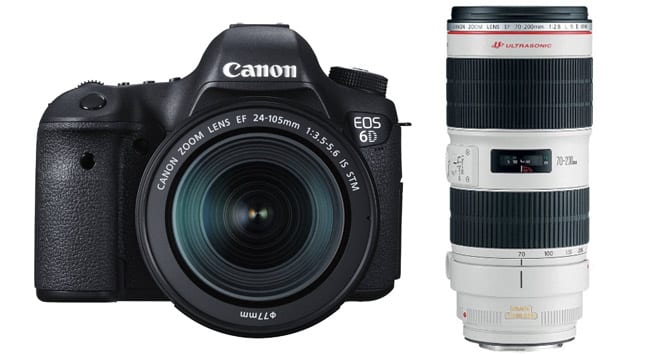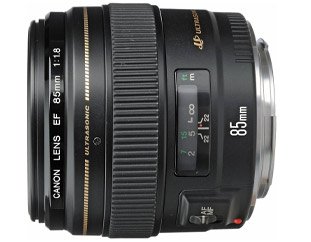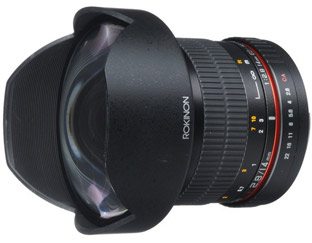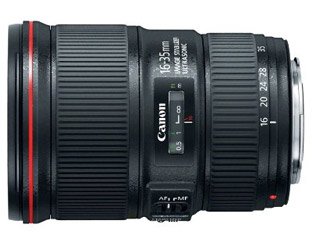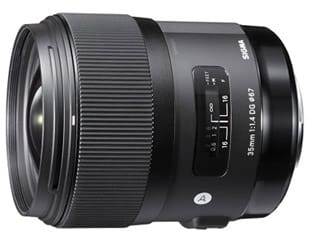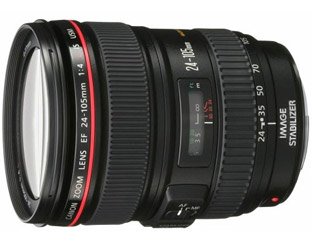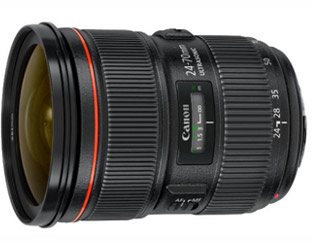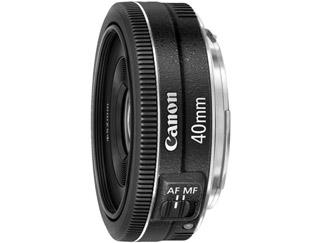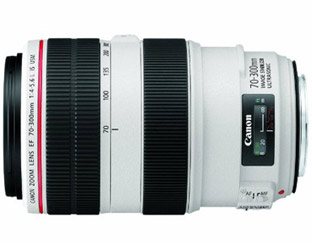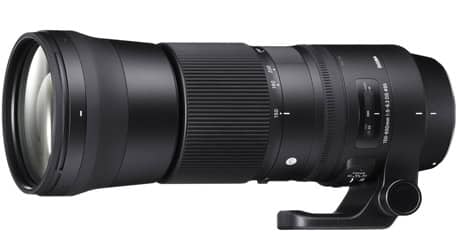If you’re into landscape, portrait, low light photography or just looking for clean, high quality shots, the Canon EOS 6D is your best affordable full frame choice.
With 20 megapixels and a 24 x 36mm sensor, the same size as film, images result in less noise compared to APS-C cameras because of bigger pixel size.
However, the quality also depends greatly on the lenses you use.
You don’t have to spend thousands of dollars on buying the best, there’s a ton of lenses available at affordable prices that are just as good, some even better.
We looked at over 60+ lenses from Canon and other third-party brands to come up with the 12 best in 4 different categories; standard length, wide-angle, telephoto and all-around.
For portraits and weddings, most people go with lenses around the 35-85mm length, and our favorite choice in this department is the Canon EF 85mm f/1.8 USM.
However, if you prefer full frame for the landscape features it offers, you’re probably looking for a high quality wide-angle. In this case, check out the Canon EF 16-35mm f/4L IS USM or an even wider Rokinon 14mm f/2.8 if you’re okay with a manual focus lens.
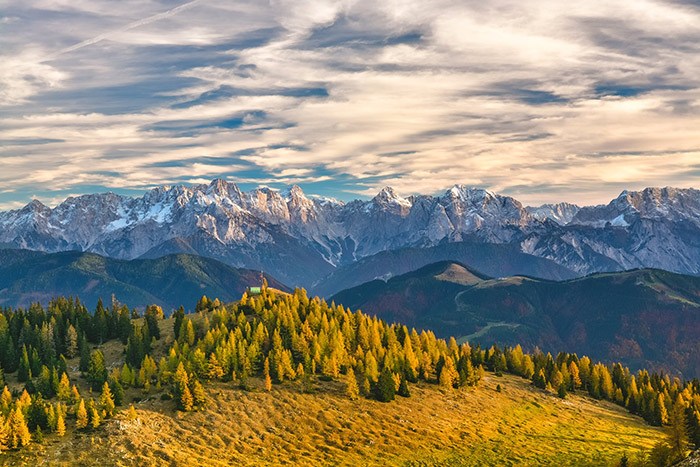
Wideangle lenses
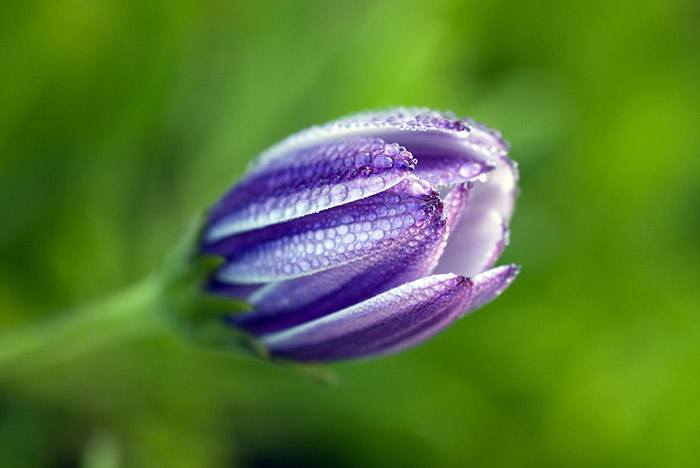
Macro lenses
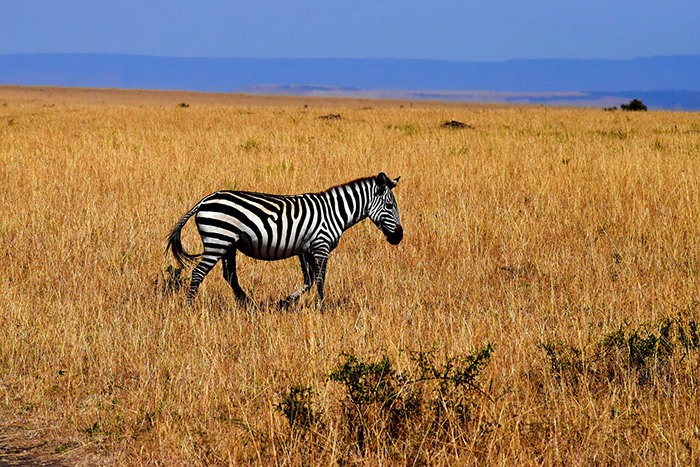
Telephoto lenses

Standard lenses
We have 4 different types of lenses:
- Wideangle – Useful for capturing a lot in your scene (usually from 8 to 35mm)
- Standard – Where most photography happens (from 35 to 85mm)
- Telephoto – For subjects far away (85 to 600mm, only a few lenses that go higher)
- Macro – 1:1 ratio that magnifies your subject to real life size (usually from 60 to 180mm)
You probably find more than 1 style of photography interesting, and we had that in mind when writing this guide.
We’re also going to assume you either own the 6D body only, or got it with a kit 24-105mm lens. If you already own some of the lenses we talk about just try to pretend like they’re not here.
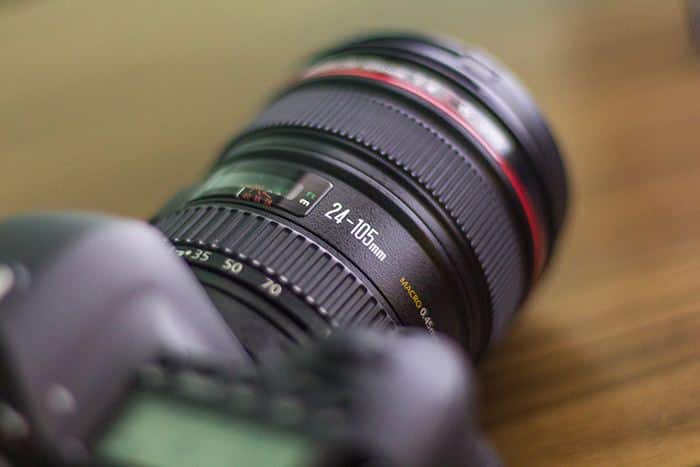
List of the lenses we recommend for the Canon EOS 6D:
We cover these lenses in depth below, but in case you’re looking for full specifications and reviews, here’s an organized list. Prime and zoom lenses, from widest to longest.
If you decide to buy anything through our Amazon links, you automatically support our work as we receive a small commission and it’s what allows us to write these guides.
Best Portrait/Wedding/Low Light Lenses:
Canon EF 50mm f/1.8 STM
Canon EF 50mm f/1.2 USM
Canon EF 85m f/1.8 USM
Best Wideangle/Landscape Lenses:
Rokinon 14mm f/2.8 IF ED
Canon EF 16-35mm f/4L IS USM
Sigma 35mm f/1.4 Art DG HSM
Best Telephoto/Action Lenses:
Canon EF 70-200mm f/2.8L IS II USM
Canon EF 70-300mm f/4-5.6L IS USM
Sigma 150-600mm f/5-6.3 DG OS HSM
Best Walkaround/All-around Lenses:
Canon EF 24-105mm f/4L IS USM
Canon EF 24-70mm f/2.8L II USM
Canon EF 40mm f/2.8 STM
Best for Portraits, Weddings, Low Light and General Photography

Best for everything and cheap -> Canon EF 50mm f/1.8 STM
Bokeh, low light, bokeh -> Canon EF 50mm f/1.2L USM
Best for portraits, weddings, concerts -> Canon EF 85mm f/1.8 USM
These lenses are good for almost all types of photography, but this is where they excel at. Their high quality, large aperture that lets in a ton of light, the ability to blur the background and a focal length that nicely compresses your subject’s face is why we put them on this list. Oh, they’re also quite affordable (except for one which we’ll let you figure on your own)
1. Canon EF 50mm f/1.8 STM
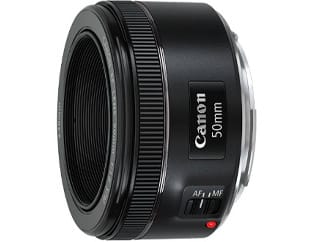
The Canon EF 50mm f/1.8 STM is a perfect companion for any Canon DSLR, simply because it offers so much for the money. Never owned a prime lens before and can’t understand what’s the big deal about this 50mm? The lens has far better quality than most zooms and thanks to aperture f/1.8, it allows you to blur the background and take pictures in darker places.
It’s so simple and easy to get a blurry background like on the example above when you’ve got a lens that can go f/2.8, f/2 or even lower, you can do that in less than a second on the 6D. Colors, bokeh and overall quality are fantastic.
It’s the cheapest Canon lens and also features STM for silent video focusing (the camera can pick up noise from the focusing and it sounds like you have an animal trapped in the camera). This can be fixed by either using STM lenses, an external microphone or using different audio in post processing.
You can buy it at Amazon or see more reviews here.
2. Canon EF 50mm f/1.2L USM
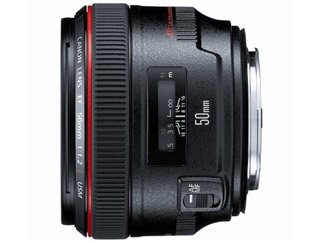
Want the best looking bokeh and super-fast shutter speeds for nighttime photography? The Canon EF 50mm f/1.2L USM is a superb lens aimed at portrait photographers.
It’s expensive and the heaviest of all three Canon 50mm lenses (there’s a f/1.4 as well but we find the f/1.8 to be a better deal), but worth the money if you know you need it. Don’t just get it if you’ve never shot with large apertures before or haven’t been using a 50mm lens for a long time. You buy the f/1.2L version because you know you want beautiful bokeh and fast speeds.
You can buy it at Amazon or read more reviews here.
3. Canon EF 85mm f/1.8 USM
The Canon EF 85mm f/1.8 USM is our wedding, concert and portrait photography winner. The longer focal results in you not having to be so close to your subject so you can be silent (big plus for weddings and concerts). Longer lenses have always been recommended for capturing people because they don’t distort the faces; they give you nice, flat results.
The USM focusing motor makes auto focusing super quick and silent, bokeh looks absolutely amazing (8 diaphragm blades) and its closest focusing distance is 2.8 feet. Images will look sharp, that’s no doubt, and you might even have to stop down the aperture a little bit to get more in focus. I’ve owned the 85mm f/1.8 for many years and can’t believe it’s still so cheap.
Look at any wedding/portrait photographer’s bag, you’ll most likely see the 85mm in there.
You can buy it at Amazon or see more reviews here.
Best for Landscape, Wideangle, Architecture and Indoor Photography

Best wide zoom -> Canon EF 16-35mm f/4L IS STM
Cheapest, widest lens -> Rokinon 14 mm f/2.8 IF ED UMC
Sharpest prime -> Sigma 35mm f/1.4 Art DG HSM
Your Canon 6D has a full frame sensor and unlike APS-C, there’s no crop factor, which means you’ve got a ton of options when it comes to wideangle photography.
However, because the sensor captures everything, it’s easier to spot vignetting and distortion, especially if you’re using a bad wide lens. Post processing can help a lot but it’s still better to own lenses with good quality design.
1. Rokinon 14mm f/2.8 IF ED UMC
Rokinon has a lot of good, affordable prime lenses, and the Rokinon 14mm f/2.8 IF is no exception.
It does display quite some distortion so it’s not recommended for shooting buildings or anything where you need to have exact straight lines. It’s fixable in post processing, but this lens is made more for photographing nature, beaches and the sky (at night as well). For having fun with long exposure shots outside you won’t find anything better.
There’s also no auto focusing, and you control the aperture on the lens itself. But the lens is $320… This is nothing, normally you’d have to pay 5x more and still not get a perfect lens!
You can buy it at Amazon or see more reviews here.
2. Canon EF 16-35mm f/4L IS USM
We think the Canon EF 16-35mm f/4L IS USM offers the most for the money compared to other Canon wide lenses. It’s sharper than the f/2.8 version and considering the 6D has pretty good high ISO performance, you won’t really miss the extra stop of light unless most of your photography is indoors in bad light.
Unlike the f/2.8, it also features Image Stabilization, but you’ll only find it useful at above ~25mm or when recording videos. The rule has always been to shoot with a shutter speed number equivalent to or faster than the focal length, which means you need to use 1/25 at 25mm and so on.
Auto focus is also fast and accurate, there’s an FTM feature for fast manual focusing and the lens is light enough to use it for traveling. Definitely a winner from Canon!
You can buy it at Amazon or see more reviews here.
3. Sigma 35mm f/1.4 Art DG HSM
If you’re looking for the sharpest lens on the list, you’ve found it. The Sigma 35mm f/1.4 DG HSM is one of our favorite all-time lenses, simply because you won’t find anything so good at this price.
Oh, you won’t find anything better even at a higher price, and that includes Canon’s more expensive 35mm. Unfortunately the Sigma is nowhere near being super affordable as well, but it’s still at a price where if you’re serious about street, portrait, wedding photography or anything in the standard focal length range, you’ll want it sooner or later.
You can buy it at Amazon or see more reviews here.
Best for Traveling, Walkaround, Zoom and Everyday Photography
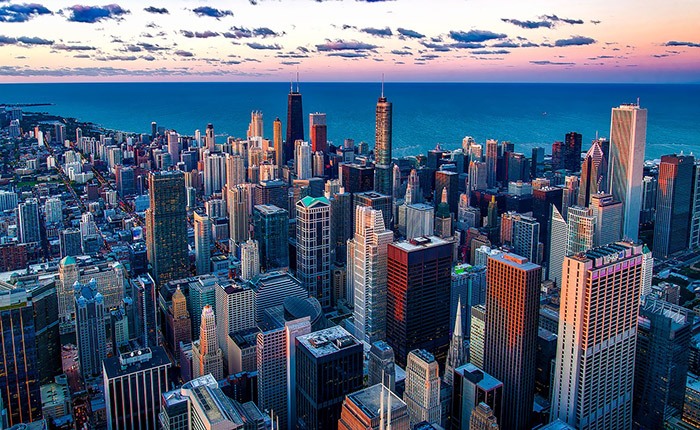
Best 1 all-around choice -> Canon EF 24-105mm f/4L IS USM
Better quality, less zoom -> Canon EF 24-70mm f/2.8L II USM
Better quality, less zoom -> Canon EF 40mm f/2.8 STM
Lenses with an enormous amount of zoom usually perform fairly bad because they have so many elements inside. It’s better to go with something that has enough zoom but is still nothing drastic, like the Canon EF 24-105mm f/4L IS USM. You can go with something even more if you really want to carry no more than 1 lens, but with good quality in mind you generally want to stick to similar lengths.
1. Canon EF 24-105mm f/4L IS USM
For years the Canon EF 24-105mm f/4L IS USM has been a standard kit lens with more expensive Canon DSLRs. It’s a perfect travel companion because it covers distances that you’ll use the most, and the fixed f/4 aperture allows you to shoot even in darker conditions.
The weather sealing is L like and makes the lens more appropriate for rain, dust and similar weather conditions, and it’s not too heavy to carry around either. Both IS and USM are features you want in an all-around lens. It’s not the ideal choice for indoor sports or action so you’ll have to raise the ISO, but at least the aperture stays at f/4 throughout the entire zoom.
You can buy it at Amazon or see more reviews here.
2. Canon EF 24-70mm f/2.8L II USM
Simply put, if you absolutely need the f/2.8 and prefer slightly better colors and quality over more zoom, get the Canon EF 24-70mm f/2.8L. It’s one of the most famous Canon lenses and is widely used by photjouranlists, wedding, portrait, travel photographers etc. It’s also good for indoor action like concerts and parties, and sports if you happen to be really close to the event.
You do lose Image Stabilization and it doesn’t seem like Canon has any plans on ever releasing the 24-70mm with it, but an extra aperture stop also makes the background more blurry and gives you that good looking bokeh.
If you can’t make up your mind, just ask yourself which is more important; a lot of zoom and lighter weight (300g difference), or a bigger aperture for portraits and improved optics (more noticeable around ~50-70mm).
You can buy it at Amazon or see more reviews here.
2. Canon EF 40mm f/2.8 STM
Want something so light you’ll forget you have it? The Canon EF 40mm f/2.8 STM was the first Canon pancake lens and is extremely popular because the size, price and quality combo is great.
It’s not a zoom but sometimes using a fixed lens as an all-around choice forces you to think about every shot and boosts your creativity.
If you record videos the STM technology is good so you don’t accidentally get any noise from the focusing on your videos. Dpreview gave it a 84% score and also recommends it to those looking for a compact lens.
You can buy it at Amazon or see more reviews here.
Best for Wildlife, Sports, Birds and Action Photography

Best telephoto zoom for low light -> Canon EF 70-200mm f/2.8L IS II USM
More zoom, cheaper lens -> Canon EF 70-300mm f/4-5.6L IS USM
Best superzoom -> Sigma 150-600mm f/5.6-6.3 DG OS HSM
With 9 AF points the Canon 6D isn’t really the best choice for extreme sports, but that still doesn’t mean telephoto photography is impossible. The Canon EF 70-200mm f/2.8L IS II USM is our favorite telephoto zoom for anyone that never ever wants to upgrade and needs a high quality lens for portraits, animals, indoor action and anything far away.
There’s also a Canon EF 70-300mm f/4-5.6L IS USM if you prefer 100mm more zoom over a fixed f/2.8 aperture and are more into wildlife.
What to look for in a telephoto lens? Anything over f/4 means you can only shoot indoors/in dark conditions if you raise the ISO speed or turn on the IS, but that’s assuming your subject is standing still. For indoors, any f/2.8 zoom will be expensive but an enormous advantage. Other than that, the more you spend the better the auto focus is at tracking and focusing on a moving target, but all of our choices are good in this department.
1. Canon EF 70-200mm f/2.8L IS II USM
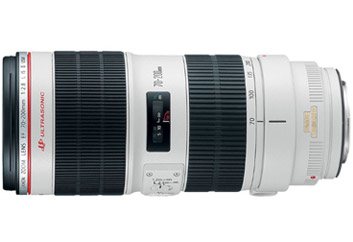 The Canon EF 70-200m f/2.8L IS II USM is one of Canon’s finest lenses, and probably the best zoom there is. This is a lens you’ll never have to upgrade from.
The Canon EF 70-200m f/2.8L IS II USM is one of Canon’s finest lenses, and probably the best zoom there is. This is a lens you’ll never have to upgrade from.
It’s tack sharp and has great colors, not to mention it’s far more weather-proof than regular lenses. This is the same for 99% L lenses. As expected from paying so much for a lens you get USM and IS, both being extremely useful at telephoto ends. If you don’t need the IS and want something lighter, there’s a Canon EF 70-200mm f/2.8L USM that goes for ~$500 less.
It’s big and heavy, but it’s a telephoto f/2.8 zoom… Almost every wedding, news, sports, portrait and nature photographer owns one.
You can buy it at Amazon or see more reviews here.
2. Canon EF 70-300mm f/4-5.6L IS USM
There’s a whole army of 70-300mm lenses, but we feel like the Canon EF 70-300mm f/4-5.6L IS USM takes the number one spot. There’s a cheaper non-L version but not as good, and is also getting replaced pretty soon so we’ll see how that goes.
The L version is built like a tank and feels extremely solid so if you want to be assured your photography gear is safe when traveling, you’ll love it. Auto focus is fast and USM makes it super silent and accurate as well, whereas IS helps you in low light or when you get tired and can’t shoot totally still anymore. The longer your focal length the more your shaking can be visible.
You can buy it at Amazon or see more reviews here.
3. Sigma 150-600mm f/5.6-6.3 DG OS HSM
Want to photograph wildlife, the moon or anything far far away? The Sigma 150-600mm DG OS HSM, released back in 2014, is your cheapest way of ever reaching 600mm with acceptable quality.
No bird is safe from you, and with HSM for focusing you can count on getting sharp results even when your subject is running. OS (Optical Stabilization) is a must, especially if you’re not using a monopod.
Anything bad? The f/6.3 makes it unusable for indoor sports, and it’s relatively heavy to carry around (68.1 oz/1930g). The downside of this downside is that it’s actually the lightest zoom that reaches 400mm. If you don’t have any trouble carrying around and love photographing in the nature, you’ll easily get over these negatives. Perhaps invest in a good sturdy tripod to help you carry some weight.
You can buy it at Amazon or see more reviews here.
Best for Macro, Product and Bugs Photography

Best Canon macro -> Canon EF 100mm f/2.8L IS USM
Best third-party macro -> Tamron 90mm f/2.8 Di VC USD
When buying a macro lens, there’s one thing you never have to worry about and that’s sharpness. We couldn’t find a single lens that would be bad here and that includes a ton of third-party options as well.
A true macro lens has 1:1 ratio (or 1x magnification), meaning the subject you’re shooting appears as big as it is in real life. You might see the term “macro” get thrown around in many zooms but just remember that if the ratio is not 1:1 it’s not macro.
For bugs and live creatures, longer focal lengths are preferred so you don’t scare them away (or them scaring you away for getting too close).
Canon EF 100mm f/2.8 USM – The best combination of price and quality. Tack sharp and also good for bugs
Canon EF 100mm f/2.8L IS USM – Get this only if you need improved build quality and Hybrid IS (useful if you shoot without a tripod). 99% similar quality to the non-L macro.
Tamron 90mm f/2.8 Di VC – Cheaper than Canon, features Image Stabilization and is a solid performer.
Lens Prices and Mount Compatibility
| Lenses | Price | Works on | Year |
| Sigma 35mm f/1.4 Art DG HSM | Amazon | Full Frame + APS-C | 2014 |
| Canon EF 40mm f/2.8 STM | Amazon | Full Frame + APS-C | 2013 |
| Canon EF 50mm f/1.8 STM | Amazon | Full Frame + APS-C | 2015 |
| Canon EF 50mm f/1.2 USM | Amazon | Full Frame + APS-C | 1995 |
| Canon EF 85mm f/1.8 USM | Amazon | Full Frame + APS-C | 1992 |
| Canon EF 16-35mm f/4L IS USM | Amazon | Full Frame + APS-C | 2012 |
| Canon EF 24-70mm f/2.8L II USM | Amazon | Full Frame + APS-C | 2013 |
| Canon EF 24-105mm f/4L IS USM | Amazon | Full Frame + APS-C | 2005 |
| Canon EF 70-200mm f/2.8L IS II USM | Amazon | Full Frame + APS-C | 2010 |
| Canon EF 70-300mm f/4-5.6L IS USM | Amazon | Full Frame + APS-C | 2014 |
| Rokinon 14mm f/2.8 IF ED UMC | Amazon | Full Frame | 2014 |
| Sigma 150-600mm f/5-6.3 DG OS HSM | Amazon | Full Frame + APS-C | 2014 |
The 6D accepts EF lenses, designed for Full Frame. You won’t be able to use APS-C only lenses, but we still give you this information in case you have another DSLR that happens to be APS-C so you know whether you can use the lens on both cameras.
Which Lens to Buy First?
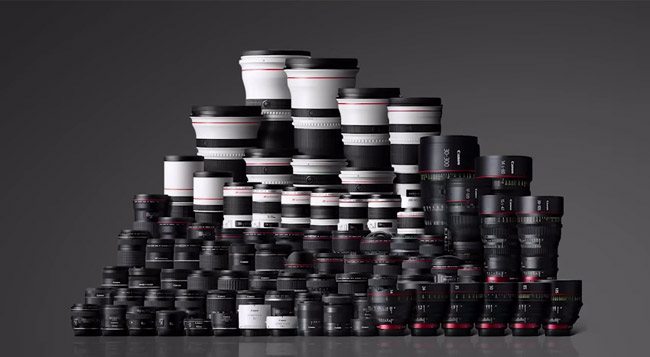
Okay so let’s say you have found a couple of lenses in our guide that you would love to own, but can’t decide which ones to pick first.
While we could complicate this, it all comes down to whether your current gear allows you to photograph what you want.
Chances are you like different styles of photography and want to shoot pretty much everything that exists. If your budget allows you and you have at least a little bit of skills at DSLR photography then absolutely go for whatever you like on this list.
These 4 factors are what it boils down to before we all buy a new lens:
- Better quality
- Better low light performance
- Wider or longer focal length
- Price
For example, if you’ve been using the 18-55mm kit lens for a few months, you’re probably wanting both better quality and improved low light performance. The Canon EF 50mm f/1.8 STM is hands down the best option here, and it fits nicely in the affordable price range.
You should get a lens when you want better performance at what you’re already shooting (sharpness, length, zoom, aperture etc.) or to start taking pictures that excite you but are hard to get with current equipment. Check out our lens table above and see what fits your budget and needs.
Here’s a useful link if you’re really interested in Canon lenses and technology behind them:
- How are Canon EF Lenses made – The official Canon page
Find the Perfect Canon Lens
If you’re looking to narrow down the options based on a specific type of photography or if you’re trying to figure out what the best lenses are for a particular Canon camera then check out our simplified guide to finding the best Canon lenses by using our “5 star” selection system.
> See all of our Canon lens guides
Last Updated on January 19, 2022 by Nick Voorhees
First and foremost, I’m a husband and father. Then professionally I’m photographer, designer, blogger, and Esty store owner. My homebase is near the stunning Wasatch mountains in Utah but I love traveling with my family as part of our homeschooling journey. I also love teaching and helping out others. My faith is one of the biggest aspects of my life and brings be a consistent joy that I haven’t found in anything else. My main blog is BestPhotographyGear.com and I strive to make photography simple for anyone looking to learn or find gear for their individual needs. By nature, I like to study, research, and analyze things and I use that help provide the best advice and reviews I can.

